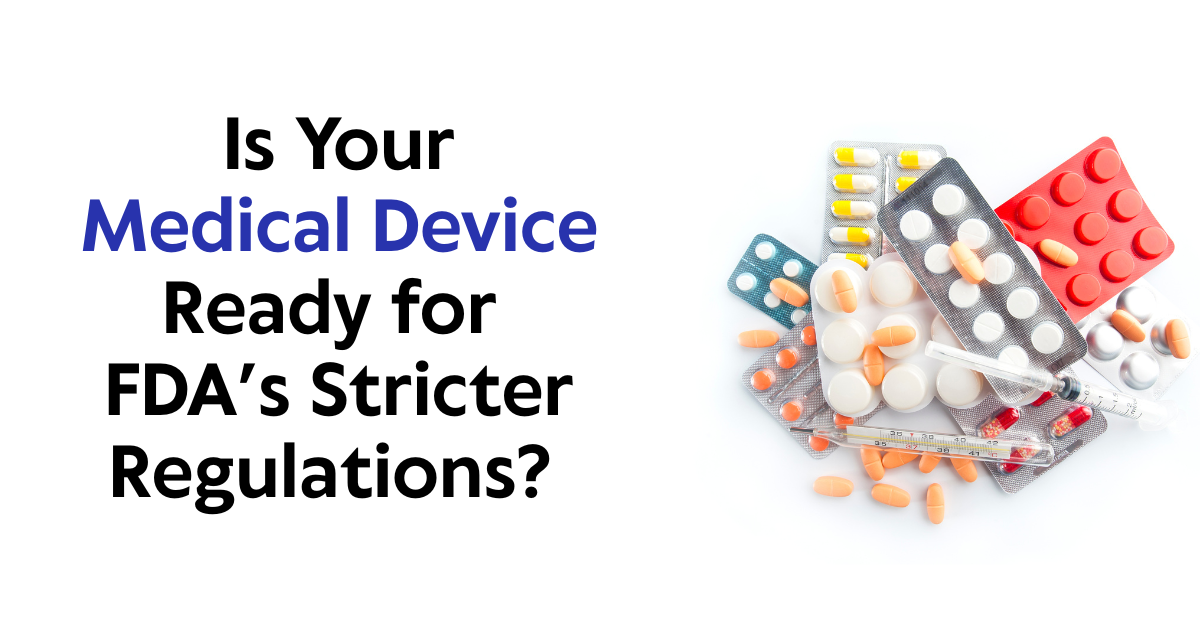The medical device industry operates under strict regulatory oversight to ensure product safety and effectiveness. The U.S. Food and Drug Administration (FDA) is pivotal in establishing and enforcing compliance standards. In 2023 alone, the FDA issued over 1,200 warning letters related to medical device compliance, highlighting the increasing scrutiny of manufacturers. Staying informed about these changes is crucial to maintaining compliance and avoiding costly delays or penalties.

Key FDA Regulatory Updates
Medical device regulations evolve to keep pace with technological advancements and emerging risks. Some of the most significant updates include:
1. Transition to the Quality Management System Regulation (QMSR)
- The FDA is aligning with ISO 13485, the globally recognized quality management standard for medical devices.
- This shift aims to reduce compliance burdens for manufacturers operating in multiple markets.
- Key focus areas include risk management, documentation, and supplier controls.
2. Strengthened Cybersecurity Requirements
- The rise of connected medical devices has prompted the FDA to enhance cybersecurity guidelines.
- Manufacturers must implement robust measures to prevent data breaches and unauthorized access.
- Pre-market submissions now require detailed cybersecurity risk assessments and mitigation strategies.
3. Software as a Medical Device (SaMD) Regulation
- The FDA has introduced a risk-based framework for SaMD, recognizing its growing role in diagnostics and treatment planning.
- Manufacturers must demonstrate software safety, efficacy, and compliance with Good Machine Learning Practices (GMLP) for AI-driven devices.
- Real-world data and continuous monitoring are emphasized to ensure ongoing compliance.
4. Enhanced Post-Market Surveillance
- Strengthened reporting requirements ensure that safety issues are identified and addressed promptly.
- Manufacturers must establish robust systems for adverse event reporting and corrective actions.
- The FDA’s use of real-world evidence (RWE) continues to grow, improving post-market decision-making.
5. Changes to 510(k) Clearance Pathway
- The FDA has refined the 510(k) clearance process to prioritize safety and innovation.
- New guidelines require manufacturers to compare devices with more recent predicates rather than outdated models.
- This change aims to improve product quality and reduce reliance on older technologies.
Future Trends and Implications
The evolving FDA landscape presents both challenges and opportunities for medical device manufacturers. Key trends include:
- Increased Focus on Artificial Intelligence (AI): AI-powered medical devices will face stringent scrutiny, requiring transparency in algorithm development and real-world performance validation.
- Global Regulatory Harmonization: The FDA continues to align with international standards, facilitating smoother market entry for U.S. manufacturers abroad.
- Emphasis on Supply Chain Transparency: Stricter regulations demand end-to-end traceability to enhance product safety and recall efficiency.
Real-World Examples
- Cybersecurity Compliance Case Study: In 2022, the FDA issued warnings to multiple manufacturers after discovering vulnerabilities in implanted medical devices. Companies had to implement urgent software patches and enhance security protocols to avoid market withdrawal.
- AI Regulation in Diagnostics: An AI-driven radiology tool recently underwent extended FDA review due to concerns about data bias and algorithmic transparency. The manufacturer had to provide extensive real-world validation to secure approval.
Conclusion
Staying ahead of FDA regulatory changes is essential for medical device manufacturers to maintain compliance and ensure market success. Adapting to new quality standards, cybersecurity measures, and post-market surveillance requirements will be critical in navigating the evolving landscape. By proactively addressing these regulatory updates, companies can enhance patient safety, streamline approval processes, and foster innovation in medical technology.